Get a Customized Website SEO Audit and Quantum SEO Marketing Strategy and Action Plan
Search engines today depend heavily on mathematical models to judge which pages deserve visibility and higher rankings. One of the earliest and most influential ideas was PageRank, introduced by Google. At its core, PageRank provides a structured way of measuring how importance flows from one page to another through hyperlinks.
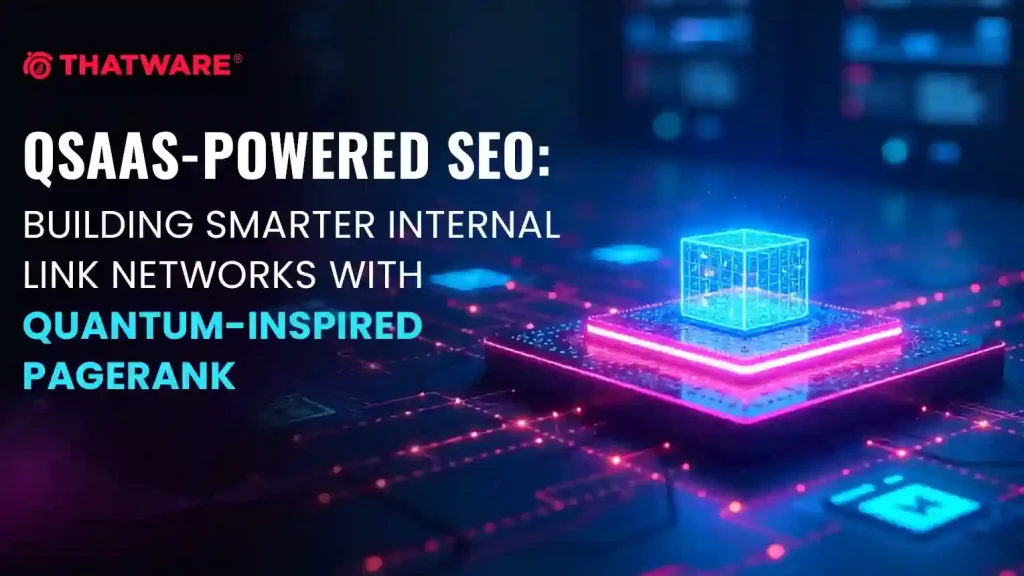
A fundamental aspect of PageRank is the concept of eigenvector centrality. This mathematical tool explains how authority is not just about the number of links but about the quality and context of those links. In other words, a single link from an authoritative page carries more weight than dozens from irrelevant or weak pages.
So, what does eigenvector-based PageRank really mean? In simple terms, it is an algorithmic method to assign relative importance to each web page in a network. It evaluates how strongly a page is positioned within the overall structure of the internet or a specific site. The eigenvector acts as a scoring system, ensuring that connections from already important pages amplify the importance of the pages they link to.
Mathematically, this is represented as:
P x = λx
Here, P is the transition matrix showing the probabilities of moving from one page to another, x represents the eigenvector containing the importance scores, and λ is the eigenvalue that provides stability to the system. For most PageRank applications, this eigenvalue is normalized to 1.
This concept may feel abstract, but it has practical implications for optimization. By analyzing link structures through eigenvector centrality, businesses and webmasters can identify pages with hidden authority, strengthen weak points in their internal linking strategy, and create clusters that search engines interpret as both relevant and trustworthy. This is where the foundation of QSAAS Optimization begins, blending traditional PageRank logic with semantic clustering and quantum-inspired methods to achieve stronger, more meaningful networks.
Current Google Ranking Model: As we know that the Google Page Rank algorithm runs on the Eigenvector model, so let’s understand how the process is going on,
For Example:
There are three websites: abc.com, def.com, and ghi.com
abc.com has 50 pages
def.com has 20 pages
ghi.com has 110 pages
Now, how Google Page Rank algorithm determine the pages of the websites using the eigenvector model?
Suppose it will start crawling 50 pages of abc.com
P1+p2+p3…….p10 (Error encountered, and then immediately deploy three instances,
1. GSC issues
2. Scan nearly link to go to next page, which will damage resource and crawl efficiency [Resource damage=Low Rank]
3. Create a Supplement index of encountered issues
Then move further )+…..p50 This whole crawling process takes time t1
Then, start crawling def.com
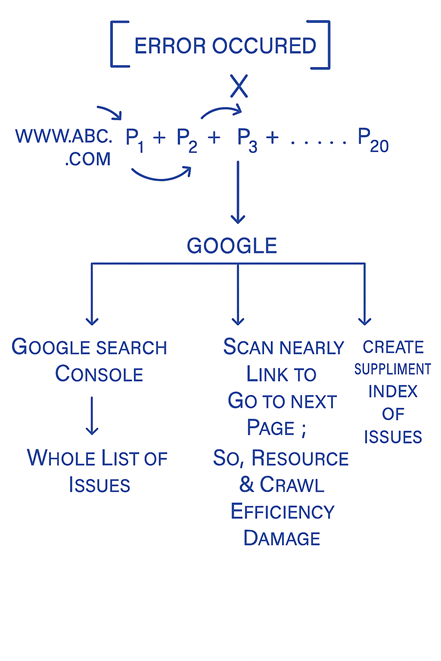
p1+p2…+P20 >>It takes time t2
Similarly, then start crawling ghi.com
p1+p2+p3+p4+…………….+P110 >> it takes time t3
So, this whole process will be done, one by one, and the total time of processing is t1+t2+t3
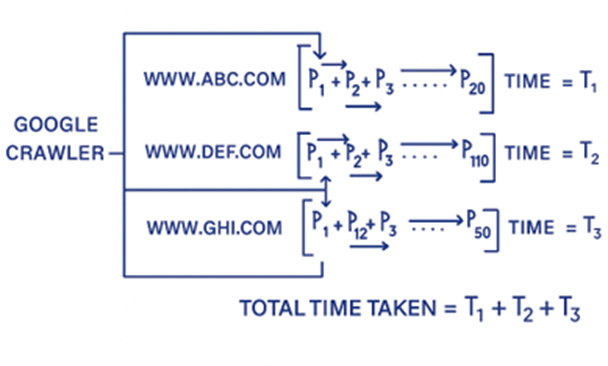
Google works on binary and the Correlation Model, so Google first completes the crawling process.
If three of the above websites are from the same niche, then Google will check which website has fewer crawling issues; accordingly, the pages of the websites will be indexed and ranked.
If the websites are from different niches, then the correlation method will be applied, then the same process will be applied for page indexing and ranking.
What Is The Problem with The Current Eigenvector Model?
To understand the limitations of the current eigenvector model, let us imagine two websites, A and B. Both compete for visibility, but their chances of ranking depend on how the algorithm processes their data.
In the existing framework, the model evaluates links in a strict sequence. It processes one node and one edge at a time, following a queue-based order. This creates a very rigid computation process where results depend on the order in which websites are analyzed.
For example:
- If website B has done some basic SEO, its data enters the queue first.
- After that, website A is analyzed, even if its content or optimization is stronger.
- As a result, the system consumes t1 + t2 units of time instead of running them in parallel.
This approach introduces a significant drawback. Search engines must spend extra time calculating relevance across competing sites because they cannot compute them simultaneously. The sequential processing causes delays, which directly impact how quickly new or improved content is reflected in rankings.
For businesses, this delay can be frustrating. Imagine publishing highly optimized, valuable content with faster updates than your competitors, only to wait longer for recognition. The queuing process slows down ranking signals, meaning competitors with earlier entries may secure positions even if their content is weaker.
In today’s fast-moving digital environment, where search engines must deal with massive data streams and constant updates, this outdated computation model creates inefficiencies. It punishes agility, reducing the advantage of producing better, timely content. This is precisely where optimization approaches like QSAAS propose a breakthrough, enabling parallel competition and faster reflection of authority signals.

Real-World Consequences of Inefficient Crawl Budget
Impact on Business Performance And SEO ROI
When the crawl budget is poorly managed, the consequences go beyond technical SEO. Key pages, including product listings, landing pages, and high-value content, may remain unindexed or take weeks to appear in search results. This delay directly impacts visibility, organic traffic, and potential leads. For e-commerce and enterprise businesses, even a single day of lost visibility can translate into substantial revenue loss.
Missed Conversion Opportunities
Orphan pages or under-crawled important pages often include high-converting content that drives sales or lead generation. When search engines fail to discover these pages quickly, businesses miss critical conversion opportunities. This inefficiency reduces overall return on investment for marketing campaigns and can slow down customer acquisition.
Competitive Disadvantages
In competitive industries, delayed indexing allows competitors to gain an advantage. Pages that are slow to appear in search results cannot compete for trending keywords or timely search queries. Over time, this leads to lost market share and weaker brand authority.
Inefficient Marketing & Resource Allocation
Teams often rely on crawl data to make informed decisions about content creation, internal linking, and promotional strategies. When the crawl budget is wasted on low-value pages, internal insights become inaccurate. This inefficiency can result in misdirected marketing efforts, underperforming campaigns, and wasted resources on content that does not contribute meaningfully to site authority.
Long-Term Algorithmic Adaptation Delays
Search engines constantly adapt their algorithms based on site structure and content relevance. Pages that remain uncrawled or poorly linked fail to send timely signals, delaying overall algorithmic adaptation. Businesses may experience slower ranking improvements despite consistent content updates, limiting long-term growth potential.
In short, inefficient crawl budget management affects more than just technical SEO. It impacts revenue, conversions, market competitiveness, and strategic decision-making, making it a vital consideration for large and growing websites.
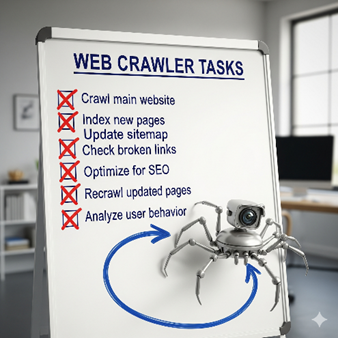
ThatWare’s Innovation: QSAAS
Recognizing the limitations of traditional PageRank analysis, ThatWare developed Quantum SEO as a Service, known as QSAAS. This approach reimagines how link authority and page importance are calculated by transforming conventional eigenvectors into Hamiltonian vectors. This shift allows for a more precise and dynamic evaluation of websites.
Why does this transformation matter?
Quantum Principles
First, such principles operate at the lowest energy levels, offering an optimized foundation for computational efficiency. By clustering multiple eigenvectors into Hamiltonian graphs, QSAAS can analyze complex link networks more effectively than conventional methods.
Parallel Computation
One of the key advantages is parallel computation. QSAAS can process multiple websites or hundreds of pages simultaneously, reducing the time required to identify high-authority pages. This capability ensures that crawlers prioritize the most significant pages, which can have a direct impact on search rankings and visibility.
In essence, ThatWare’s QSAAS provides a smarter, faster, and more scalable approach to understanding how link authority flows through a website. Businesses can leverage this technology to uncover hidden page potential, strengthen internal link structures, and create strategically organized content clusters that align with both PageRank principles and modern semantic SEO.
How QSAAS Works?
QSAAS introduces a revolutionary approach to website optimization by applying quantum-inspired techniques to traditional SEO structures. Its workflow focuses on efficiency, precision, and improving search engine indexing outcomes.
Restructuring Websites into Hamiltonian Graphs
The first step in QSAAS involves transforming the entire website into a Hamiltonian graph. In this structure, each page becomes a node connected to other pages based on link authority and semantic relevance. By modeling the website this way, QSAAS can visualize and analyze how link equity flows across the network. This restructuring ensures that critical pages are accurately identified and prioritized for search engine crawlers.
Crawlers Traverse Key Nodes Efficiently
Once the Hamiltonian graph is established, crawlers can navigate each key node exactly once while remaining at the ground state of energy, effectively, energy equals zero. This concept, inspired by quantum mechanics, allows crawlers to follow an optimized path that reduces redundancy. By visiting only essential pages, crawlers maximize the impact of their traversal and ensure that search engines capture the most important content first.
Saving Crawl Budget And Enhancing Indexing Quality
One of the practical advantages of QSAAS is the conservation of crawl budget. Traditional crawlers may waste resources revisiting low-priority pages or following inefficient paths. QSAAS solves this by directing crawlers to high-value pages efficiently, resulting in faster and higher-quality indexing. This not only improves the visibility of critical content but also ensures that search engines understand the hierarchical and semantic relationships across the website.
In essence, QSAAS works by combining advanced graph theory with quantum-inspired principles to create a website structure that is both highly optimized and easily interpretable by search engines. Businesses leveraging this approach can achieve faster indexing, better crawl efficiency, and stronger alignment with modern SEO best practices.
Here’s an elaborated, humanized, and high-quality version of your section with added context and subheadings for clarity:
Adiabatic Algorithm in The QSAAS Model
A core innovation of the QSAAS framework is the introduction of the adiabatic algorithm, a quantum-inspired approach designed to optimize computations across multiple websites. This algorithm allows simultaneous evaluation of complex link structures and semantic relationships, creating efficiency far beyond traditional methods.
Parallel Computation across Multiple Websites
In conventional eigenvector-based PageRank models, analyzing multiple websites requires sequential calculations. For example, if there are N websites labeled n1, n2, n3, and so on, each website is processed one after another. This consumes a cumulative time of t1 plus t2 plus t3 and so forth for all websites.
With the adiabatic algorithm in QSAAS, all N websites are processed in parallel. By mapping each website’s eigenvectors into a Hamiltonian system, the algorithm allows simultaneous computation across the network.
This ensures that the total computation time is reduced to approximately t1, regardless of how many websites are involved.
Efficiency & Scalability
The result is a dramatic improvement in efficiency. Businesses managing multiple domains no longer need to wait for sequential indexing or analysis. The adiabatic approach ensures that crawlers and ranking algorithms can process extensive web networks with minimal delay. This not only saves computational resources but also accelerates the identification of high-authority pages and key content clusters.
Practical Implications
For companies, the ability to compute multiple sites in parallel translates into faster insights, smarter internal linking strategies, and more informed SEO decisions. The adiabatic algorithm turns a traditionally time-intensive process into a scalable, high-performance operation, positioning QSAAS as a next-generation solution for modern SEO challenges.
For example, and detailed explanation:
Here is an example, how a Hamiltonian graph works,
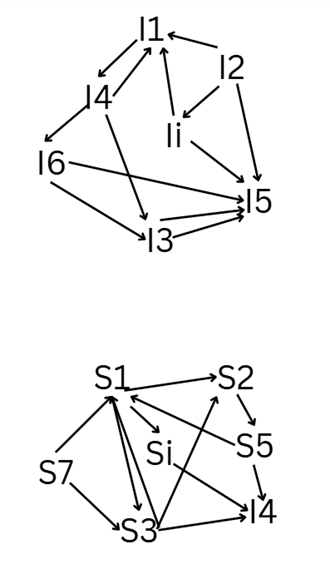
Where, I1………..In = pages of Website I
Distance/Edge = Links between nodes(pages) [internal link/external link]
Similarly, S1…………Sn = pages of website S
Distance/Edge = Links between nodes(pages) [internal link/external link]
“Here, each structure represents the architecture of the respective websites.”
So previously in the Eigenvector model, each websites were taken as a separate unit for further processing of crawling, indexing, and ranking.
Now, in a Hamiltonian graph,

If there are n number of websites, then each website architectures of all websites will be taken as one cluster, because Quantum uses Hamiltonian Vector that takes the entire corpus cluster to ground zero or lowest energy or qubits.
So, in the Current Google Page Rank Algorithm (Gp=>Eigenvector)[Non quantum]
Time-consuming:
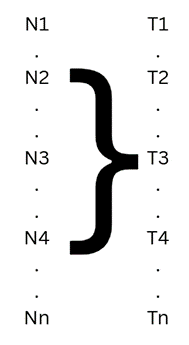

Google Page Rank Algorithm (Gp=>Eigenvector) is operates in binary, either “0” or “1” which means, while crawling of a website, if any issues encountered on any page then the state will be 1 ->0 and the bots will return the exception which is we discover on GSC as indexing issue, then again restart the crawling process from next page.
Now, in a Hamiltonian graph using the Adiabatic algorithm,
“H0” is the lowest energy state, which operates on Qubits 00 01 10 11
There will be created n number of matrices (Depending on the number of websites) of qubits for determining the states and handling the crawl/indexing errors.
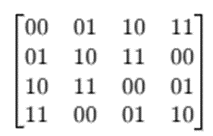
x N
So, the crawling and indexing procedure will be done for all websites in parallel or simultaneously at the same time (t)
This means:
- Faster crawling
- Parallel page analysis
- Real-time detection of crawl bottlenecks
- Fixes applied at the page-level, not the entire site
- Overcomes eigenvector limits:
- Dynamic range
- Scalability
- Noise-resistant authority flow
- Better contextual discovery
- Simulates real-time authority flow changes
- Google’s Current page rank algorithm process output:

Gp will take time unit
- Time consumption limit depending on the number of websites.
- If there are any page issues encountered, then there will be more crawl delay

Where P=crawl delay
- Unit-level work is possible, where we need to solve or restructure the pages that are causing harm to expedite the process.
Quantum algorithm(Adiabatic) output:
- Quantum will take t unit time only because of the qubits matrix.
Website numbers do not affect the processing time, as the multiple quantum agents run in parallel to execute the crawling process simultaneously.
If any error is encountered in any page, then it will bypass that page and move forward to the next page to expedite the process, without Google’s three conditions, because it uses the Adiabatic algorithm, which finds the best path. And the supplement index comparison also happens simultaneously.
- For example:
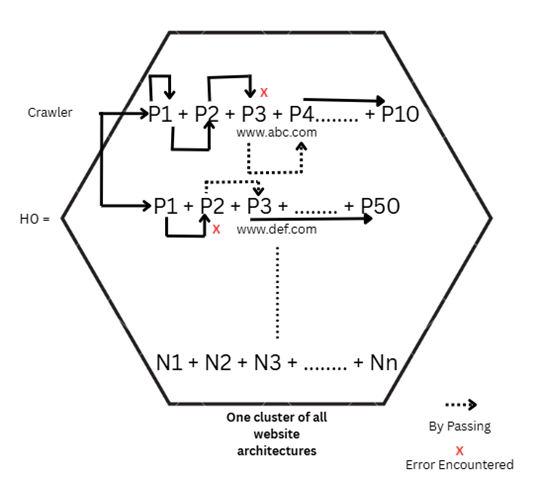
Here’s a clean difference table comparing Google’s Traditional Crawling Output vs Quantum Crawling Output:
| Aspect | Google Traditional Crawling | Quantum Crawling |
| Indexing Speed | Delayed indexing process (t1 + t2 + … + tn) | Faster process in a single unit time (t) |
| Indexing Approach | Supplemental indexing for each website individually (no parallel crawling) | Parallel simulation with competitor correlation indexing |
| Issue Handling | Generates a long list of indexing issues | Requires fixing the minimum number of pages to cover large websites |
| Coverage | GSC coverage issues persist | Crawling achieves wider & quicker coverage |
| Crawl Budget | High crawl budget waste | Efficient crawl with less resource consumption |
| Resource Usage | Damages crawl efficiency and consume more resources | Optimized crawling & rendering efficiency |
| Workload | Requires individual unit-level fixes for each page | Few targeted fixes impact a larger set of pages |
| Indexing Errors | Must fix all errors blindly without priority | Indexing more focused → fewer fixes, higher priority pages |
| Rendering Speed | Slower rendering | Faster rendering |
| Indexing Potential | Slower indexing possibilities | High-speed indexing possibilities |
| Ranking Impact | Ranking rewards delayed | Faster ranking rewards |
Now, here we have created two applications using the above QSAAS model.
Quantum-Inspired Crawl And PageRank Analyzation
Why We Focus on This?
Every search engine allocates a crawl budget for websites, determining how many pages it can explore during each session. If this budget is consumed by low-value, duplicate, or slow-loading pages, high-priority content may be delayed in indexing or even overlooked entirely. Many traditional SEO audits rely on static metrics, which fail to capture how crawlers actually navigate and interpret a website.
QSAAS addresses this gap by simulating the crawler’s perspective with precision and efficiency. Instead of evaluating pages in isolation, it examines the entire website through a quantum-inspired lens.
Targeted Crawling for Maximum Efficiency
This tool focuses only on the URLs you specify, ignoring non-essential elements like images, PDFs, CSS, or JavaScript files. By doing so, it removes noise from the crawl process, allowing crawlers to spend time on pages that matter most for ranking and user experience.
Measuring Real Fetch Times
Understanding page load speed is critical because slow-loading pages can hinder indexing and reduce overall site performance. QSAAS records actual fetch times for each page, providing actionable insights into which pages need optimization to improve both search engine rankings and user engagement.
Computing PageRank on Internal Links
QSAAS evaluates your internal link structure using PageRank calculations. This reveals how authority flows between pages, highlighting strong content hubs and weaker nodes that may require additional links or structural adjustments. By visualizing this authority distribution, businesses can make strategic internal linking decisions to maximize SEO impact.
Visualizing Bottlenecks and Optimization Opportunities
The tool presents slow pages, heavy content, and internal linking flow in an easy-to-understand visual format. This allows webmasters to quickly identify bottlenecks and areas for improvement, whether it involves compressing large pages, restructuring links, or prioritizing key pages for indexing.
Quantum-Inspired Principles for Smarter Analysis
Inspired by principles from quantum computing, such as parallel processing and Hamiltonian-inspired link graphs, this approach allows faster and smarter website analysis. It simulates how multiple paths through a website can be evaluated simultaneously, saving time and ensuring that the most important pages receive proper attention.
By combining crawl efficiency, real-world PageRank analysis, and quantum-inspired insights, this method gives businesses a powerful way to optimize internal link structures, improve indexing, and enhance overall search visibility.
Here’s a fully elaborated and humanized version of your SEO Benefits & Crawl Budget Savings section, structured for clarity and reader engagement:
SEO Benefits And Crawl Budget Savings
Efficient website crawling is crucial for achieving strong search engine performance. QSAAS not only improves indexing but also maximizes the value of your crawl budget, ensuring search engines focus on the content that matters most.
Highlight Slow Pages
Pages that take too long to load can waste crawl resources and frustrate users. This tool identifies slow-loading pages, allowing you to prioritize optimizations such as compressing images, streamlining code, or improving server response. Faster pages are indexed more efficiently and provide a better user experience, which search engines reward.
Optimize Internal Linking
Internal links distribute authority across your website, influencing how search engines perceive the importance of each page. By analyzing PageRank within your internal link network, QSAAS highlights weak or orphan pages that receive little link equity. Strengthening these connections ensures that every important page benefits from your overall authority, improving site structure and SEO performance.
Save Crawl Budget
Crawl budget is a limited resource allocated by search engines for each website. QSAAS helps conserve it by identifying slow, thin, duplicate, or low-value pages that unnecessarily consume crawl capacity. Removing or optimizing these pages allows search engines to spend more time on high-value content, increasing the chances that key pages are indexed quickly and accurately.
Boost SEO Rankings
Combining faster page indexing with stronger internal linking creates a powerful impact on search visibility. Important URLs receive priority attention from search engines, increasing their likelihood of ranking higher in search results. This results in more targeted traffic and better performance across competitive keywords.
Smarter Crawling for Maximum Impact
In essence, QSAAS enables Googlebot and other search engines to crawl smarter rather than harder. It ensures that your SEO efforts are focused, efficient, and aligned with best practices, providing measurable improvements in indexing, authority flow, and overall search rankings.
Here is the colab link for the analyzer: https://colab.research.google.com/drive/1JHdaKBSkVPLj4K9IaL_id3oYxBOhVAPk
Step 1: We need to provide the Excel sheet containing the whole website pages(Only important HTML pages)
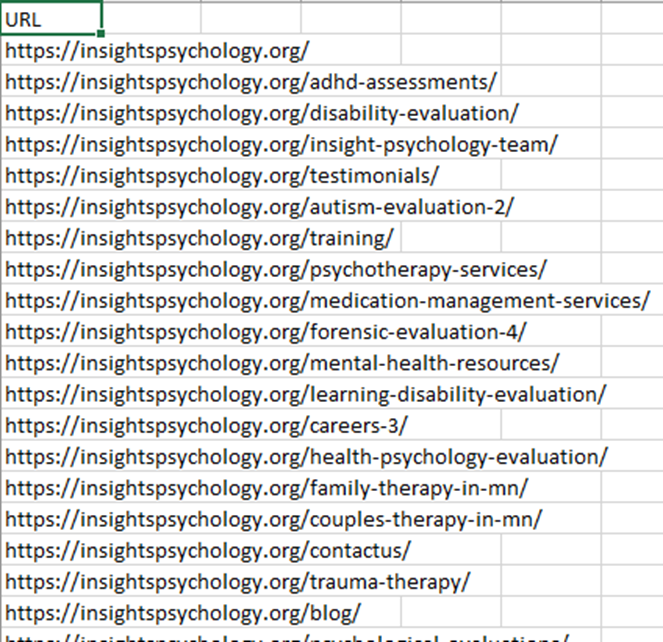
Output:
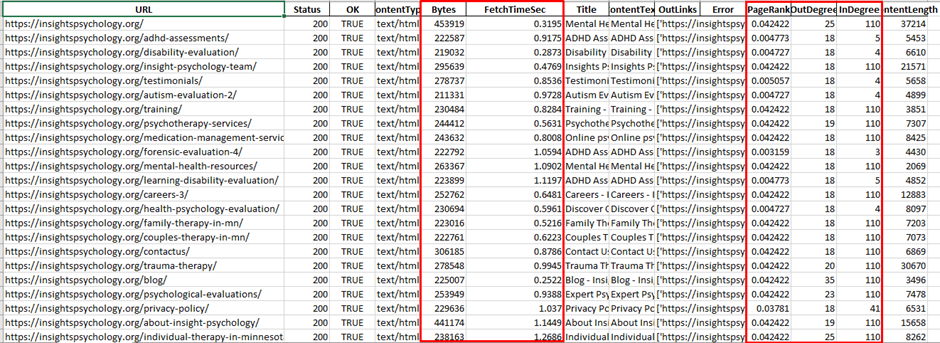
Excel Report (crawl_analysis.xlsx)
- Crawl_Results → Each URL with:
- FetchTimeSec → How long it took to load.
- Bytes → Page weight (size).
- Status → HTTP response (200, 301, 404, etc.).
- PageRank → Authority score from internal linking.
- InDegree / OutDegree → How many links point to it, and how many it points out.
- ContentLength → Word count proxy for content depth.
- Top_Slowest → The heaviest time-consuming URLs (candidates for optimization).
- Internal_Links → Source → Target mapping of your site’s internal structure.
- PageRank → Sorted list of URLs by authority.
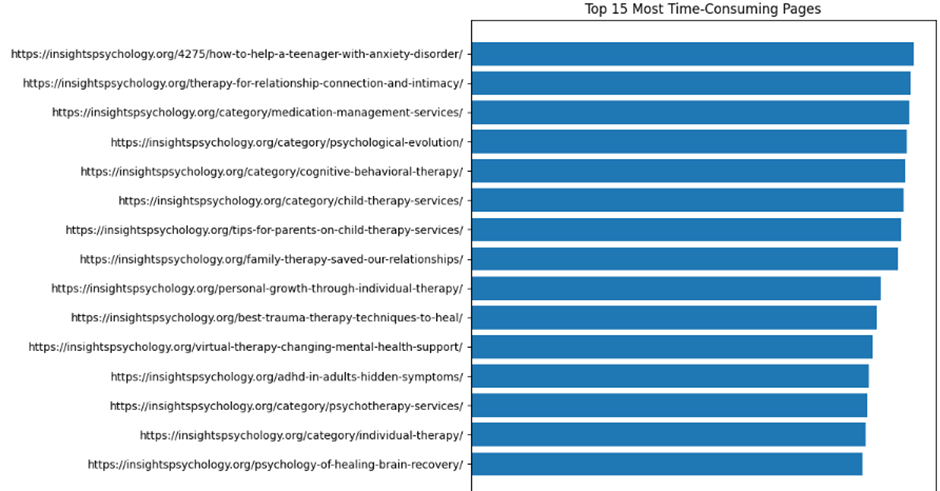
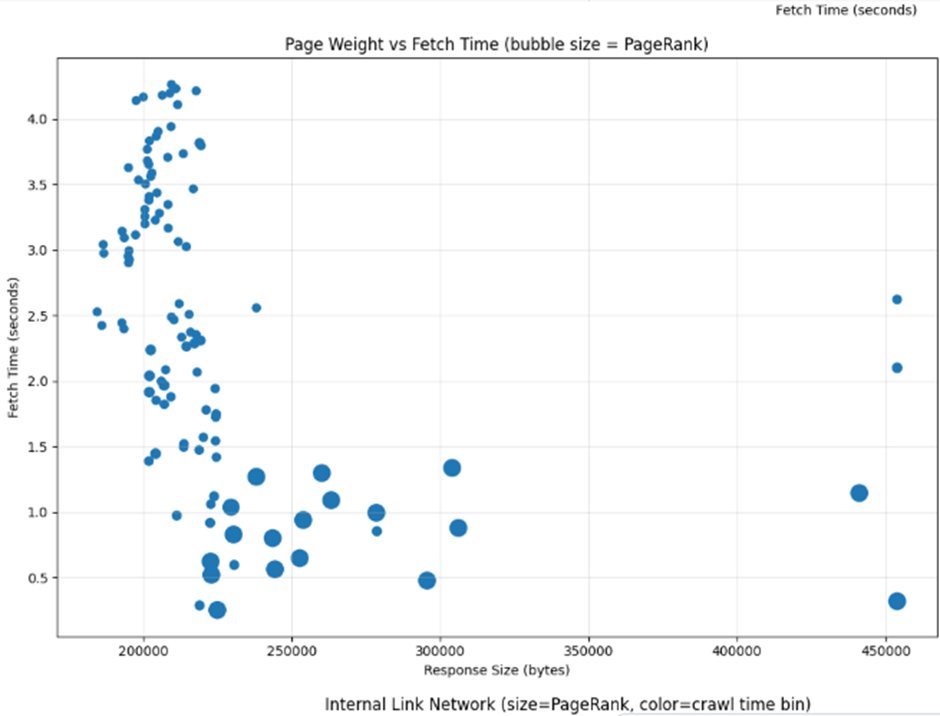
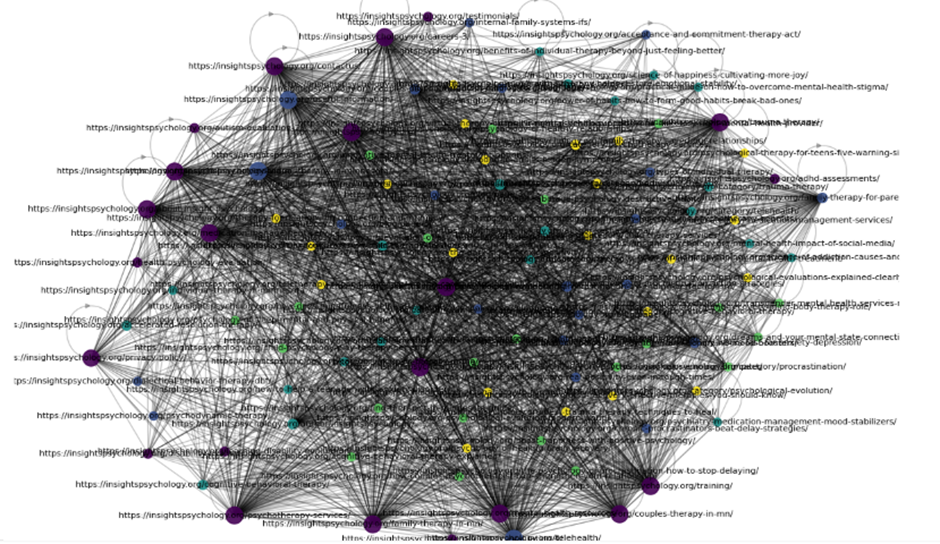
Visualizations (in Colab)
- Top 15 Most Time-Consuming Pages (Bar Chart) → Shows which URLs eat crawl time.
- Page Weight vs Fetch Time (Scatter Plot) → Spot heavy pages vs slow pages (bubble size = PageRank).
- Internal Link Graph → Node size = PageRank, Node color = crawl time bin → visually shows which pages are strong hubs and which are crawl drags.
Stronger Internal Link Network based on Page Rank And Semantic Cluster using QSAAS
Quantum-Inspired Optimization for Page Importance
In this approach, we implemented a quantum-inspired SEO analysis model to optimize website pages more intelligently. Each page is treated as a node, and every internal link is considered a weighted edge. By combining PageRank calculations with this graph structure, QSAAS identifies which pages hold the most authority within a website and how link equity flows between them. This provides a clear map of page importance, helping webmasters make data-driven decisions about linking strategies.
Integrating Semantic Clustering for Topical Relevance
Beyond authority, topical relevance plays a critical role in search performance. QSAAS groups related pages into semantic clusters based on content similarity. By considering both the PageRank score and semantic alignment, the system ensures that internal links are suggested not just based on popularity but also on meaningful contextual connections. This creates a more cohesive site architecture that reinforces topical authority and improves search engines’ understanding of your content.
Intelligent Internal Linking Recommendations
A specialized output module generates actionable linking suggestions. It identifies source pages that can pass authority and relevance to destination pages effectively. By combining PageRank scores with semantic similarity, the system produces a network of internal links designed to improve crawl efficiency, distribute authority evenly, and strengthen overall site structure.
Benefits for SEO &User Experience
The result is a stronger, smarter internal linking network. Crawl budgets are used efficiently because high-value pages are prioritized. Authority is distributed strategically to enhance the SEO performance of key pages. At the same time, semantic alignment ensures that users encounter logical, contextually relevant navigation paths, improving engagement and reducing bounce rates.
By leveraging QSAAS for internal linking, businesses can achieve a site structure that not only performs well in search engines but also delivers a seamless user experience. The combination of PageRank and semantic clustering provides a next-level strategy for building authority, relevance, and visibility across the website.
Importance of The Adiabatic Algorithm in Quantum SEO Analysis
The Adiabatic Quantum Algorithm (AQA) is a key innovation in quantum-inspired SEO analysis. It provides a framework for optimizing complex web structures in ways that classical methods cannot achieve.
Unlike traditional algorithms that rely on sequential or heuristic approaches, the adiabatic algorithm gradually evolves a system from an initial state to an optimized ground state. This evolution allows it to discover solutions that are globally optimal rather than locally optimal, making it exceptionally effective for SEO challenges that involve millions of interconnected pages.
- PageRank Optimization
One of the most impactful applications of the adiabatic algorithm is in PageRank optimization. By analyzing the entire link network simultaneously, the algorithm identifies the global optimal ranking state across all pages. This ensures that high-value pages receive appropriate authority while weakly connected pages are strategically supported through internal linking. Businesses can use this insight to strengthen key content and improve overall site performance in search results.
- Semantic Clustering
The adiabatic model is also highly effective for semantic clustering. It maps content into topic-based clusters while minimizing overlap and redundancy. By evolving toward the most stable, lowest-energy semantic structures, the algorithm creates logical and meaningful content groupings. This enables search engines to understand the relevance and topical authority of each page more accurately, improving visibility for clusters of related content.
- Internal Linking Strategy
Internal linking is another area where the adiabatic algorithm delivers significant benefits. It identifies the most efficient link architecture to maximize topical authority while minimizing redundancy. This allows websites to distribute link equity strategically, ensuring that high-value pages are prominently supported by the network while reducing unnecessary or repetitive connections.
Practical SEO Benefits
In practical terms, the adiabatic algorithm translates into faster convergence, deeper insights, and more precise optimization recommendations. SEO teams gain the ability to move beyond linear heuristics and basic ranking assumptions. Instead, they can leverage multi-dimensional ranking signals that align more closely with how modern AI-driven search engines evaluate relevance and authority. The result is a smarter, more efficient approach to SEO that empowers businesses to optimize content, links, and site structure with scientific precision.
By integrating the adiabatic algorithm into Quantum SEO, QSAAS transforms complex web structures into actionable strategies, providing insights that were previously unreachable using classical methods.
Here is the colab link:
https://colab.research.google.com/drive/1LBgKju3zfZ2BkrgX_c-sxmvC3YicJT16
Input:
We have taken the URLs that we want to analyze and created clusters according to the page rank and semantic relation.
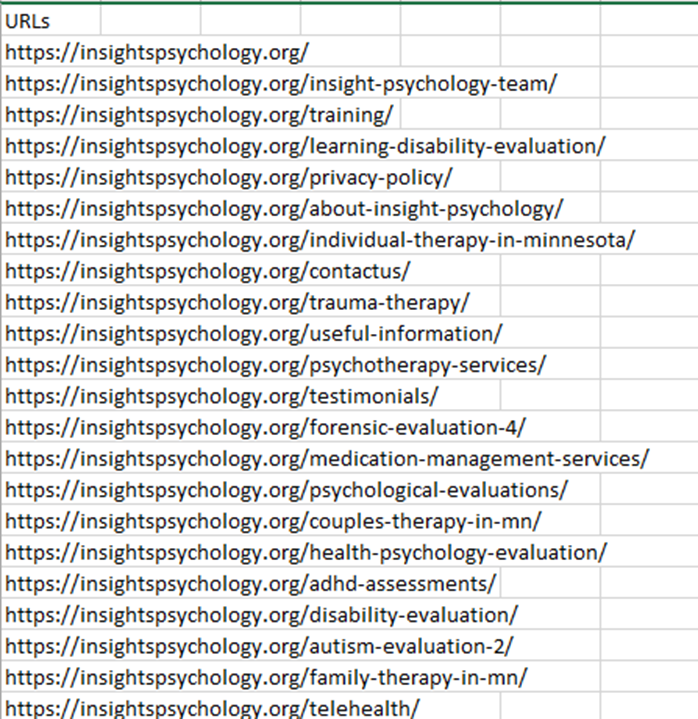


Based on the Inputs given, it created a cluster according to the page rank and value. It will help to understand the relations between the pages according to the page rank.
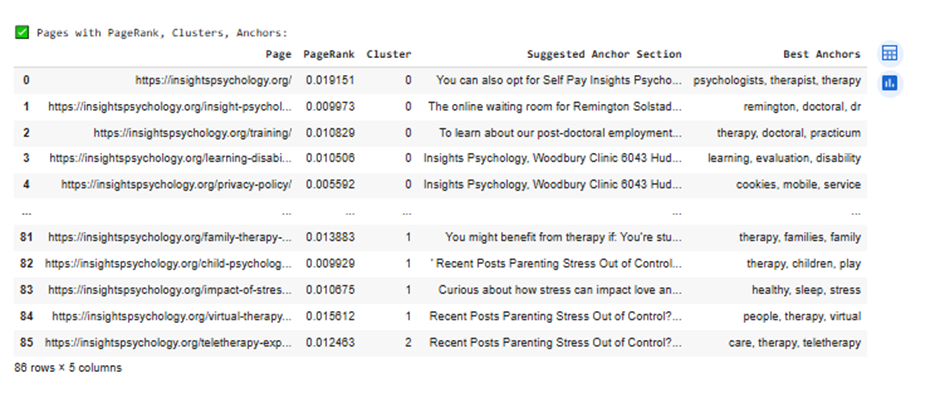
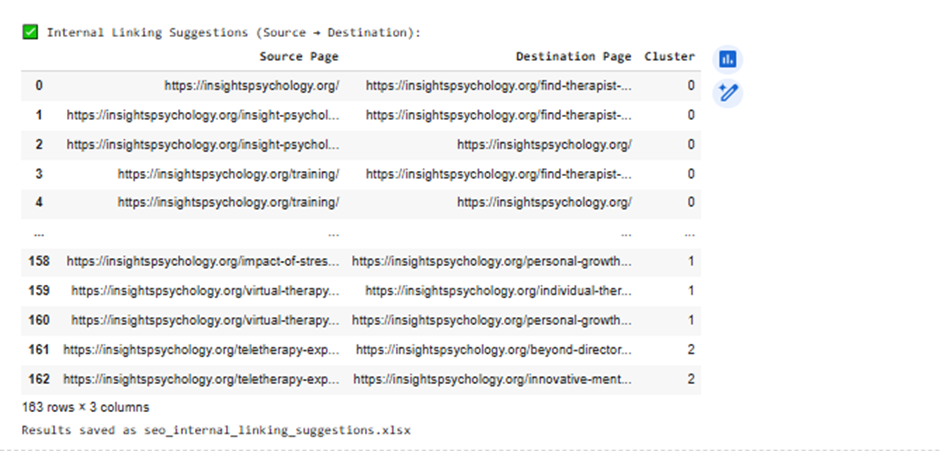
Now, we have got the suggestions for creating the internal link network based on the algorithm calculation, which will help us to create the internal linking by understanding the real value of the pages.
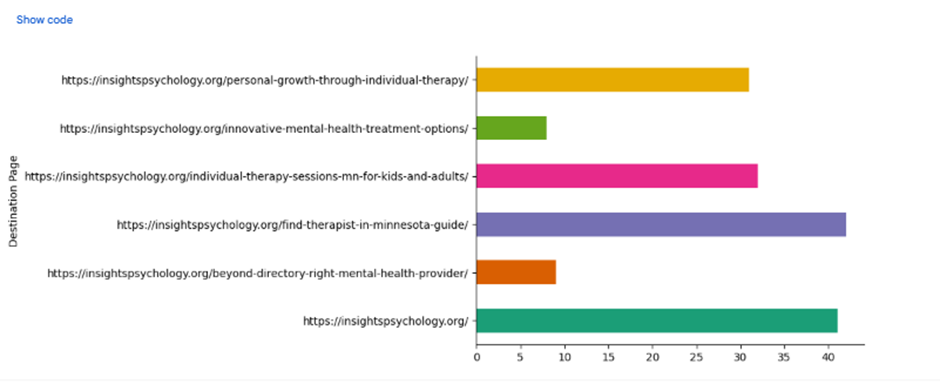

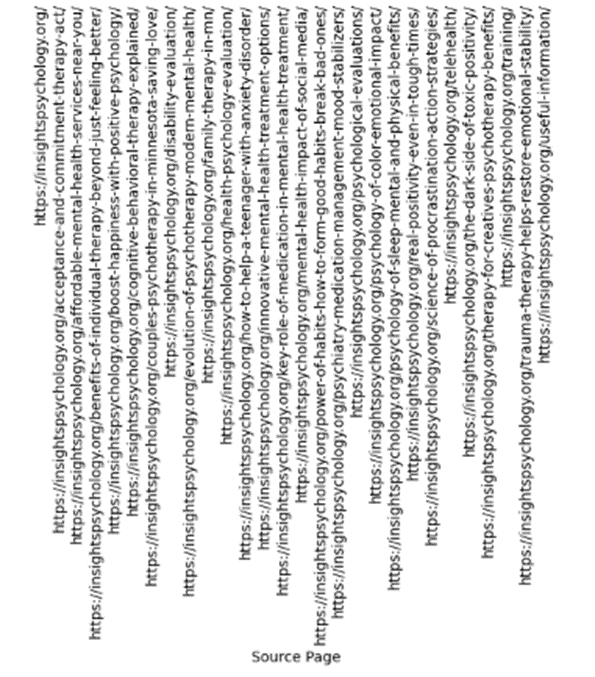
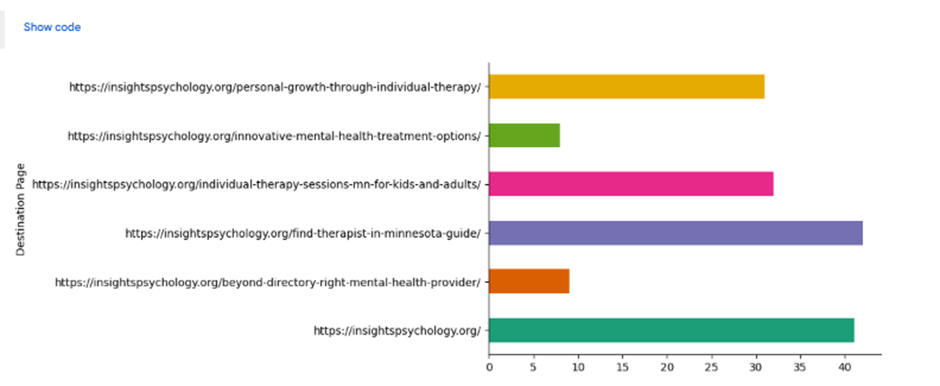
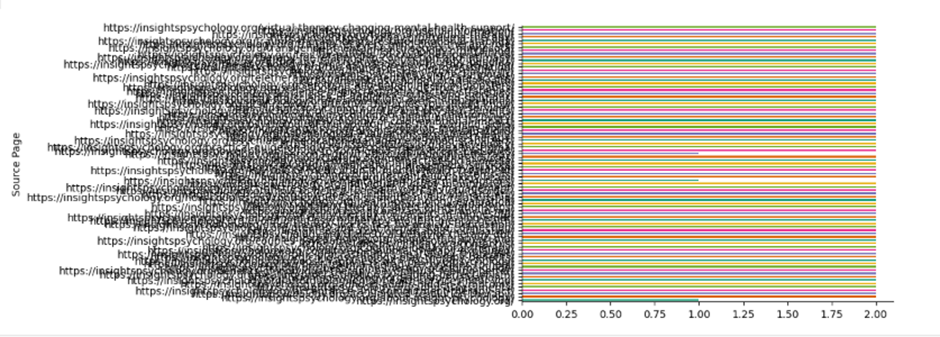
So we have got the suggestions for creating the internal linking according to the Page Rank and semantic relation, which makes the internal network graph stronger.
Some Additional Quantum-Powered SEO Context
1. Quantum-Safe SEO Security
Quantum-Safe SEO Security focuses on protecting your digital presence against the emerging threats posed by quantum computing. Traditional encryption may soon be vulnerable, making it crucial for businesses to adopt quantum-resistant methods. By integrating quantum-safe strategies into SEO, you not only safeguard website data but also future-proof your ranking efforts. From secure keyword analysis to protected link-building, quantum-safe practices ensure that your SEO campaigns remain effective and resilient. Learn how implementing these measures complements Quantum SEO as a Service and keeps your online strategy both cutting-edge and secure.
2. Adiabatic Quantum Algorithm
The Adiabatic Quantum Algorithm leverages quantum principles to solve complex optimization problems more efficiently than classical methods. In the context of SEO, it can handle large datasets, enhance keyword clustering, and optimize site structures with unprecedented speed. Gradual problem-solving inherent to adiabatic computing enables more precise predictions of search engine behaviors, improving ranking potential. Integrating these principles into SEO workflows helps brands scale strategies effectively while maintaining accuracy. Discover how these cutting-edge techniques tie directly into Quantum SEO as a Service to deliver smarter, data-driven results for modern websites.
3. ARP-Enhanced Quantum PageRank Algorithm
The ARP-Enhanced Quantum PageRank Algorithm revolutionizes traditional PageRank by leveraging quantum computing to improve accuracy and efficiency. It calculates page authority faster, handling massive interlinking networks without compromising precision. For SEO professionals, this means more reliable predictions of site rankings and a stronger understanding of competitive landscapes. The enhanced algorithm supports scalable optimization strategies for multi-location or enterprise websites. Implementing these insights alongside Quantum SEO as a Service allows businesses to maximize search visibility, ensuring that every link, page, and keyword contributes effectively to overall SEO performance in a quantum-driven digital ecosystem.
4. Grover’s Search Algorithm
Grover’s Search Algorithm provides a quantum-powered approach to rapid data retrieval, offering quadratic speed improvements over classical search methods. In SEO applications, it enhances keyword discovery, content indexing, and competitive analysis, enabling faster decision-making for optimization strategies. By leveraging Grover’s algorithm, businesses can identify high-impact opportunities within large datasets and refine content strategies with precision. Integrating Grover’s approach into SEO workflows complements the principles behind Quantum SEO as a Service, allowing brands to harness quantum efficiency for more effective search engine performance and smarter, data-driven digital strategies.
Conclusion
The Quantum-Inspired Crawl + PageRank Analyzer with Semantic Clustering (QSAAS) provides a transformative way to approach SEO beyond conventional methods. By combining PageRank authority scoring with semantic clustering, the model not only identifies the most important pages but also maps how they relate to each other topically.
This dual-layer analysis delivers three key advantages:
- Efficiency in Crawl Budget Usage – By focusing on high-value pages and avoiding crawl drags, search engine bots can allocate resources more effectively, ensuring faster and deeper indexation.
- Smarter Internal Linking Strategy – Instead of linking purely based on authority, the semantic clustering layer ensures that links also reinforce topical relevance, strengthening site architecture and topical authority in the eyes of search engines.
- Quantum-Inspired Optimization – The use of an adiabatic algorithm simulates quantum parallelism, allowing faster convergence towards optimal internal linking structures and ranking states, overcoming the limitations of traditional linear SEO heuristics.
The outputs clearly show which pages:
- Consume excessive crawl time and need performance optimization.
- They are weakly connected or orphaned, requiring stronger internal links.
- Carry high PageRank authority but could distribute it better through contextual linking.
Next Steps & Plan of Action
Based on the outputs, here’s how to proceed:
A. Fix Slow Pages
- Identify the Top 15 slow pages.
- Optimize:
- Reduce heavy scripts/images.
- Enable caching & compression (GZIP/Brotli).
- Use CDN for static assets.
- Improve server response time (TTFB).
B. Strengthen Weak Pages
- Look at orphan pages (InDegree = 0).
- Add internal links from high PageRank pages → this distributes authority and improves indexation.
C. Optimize Internal Linking
- Identify if authority is concentrated in a few pages only.
- Add contextual links to distribute PageRank evenly.
- Ensure important pages are within 2–3 clicks from the homepage.
D. Save Crawl Budget
- Exclude thin or duplicate pages with robots.txt or noindex.
- Merge/redirect irrelevant URLs to stronger pages.
- Ensure canonical tags are properly used to avoid wasted crawling.
E. Monitor & Iterate
- Rerun the analyzer monthly or after big site changes.
- Track if FetchTimeSec decreases and PageRank distribution improves.
- Measure SEO impact (faster indexation, ranking growth).
By implementing the recommendations from this analyzer—optimizing slow pages, strengthening orphan/weak pages, and reinforcing semantic internal links—the site can achieve faster indexing, stronger crawl efficiency, and improved topical authority.
Hence, this marks a step toward a quantum-inspired SEO era, where optimization aligns more closely with how modern search algorithms evaluate authority + relevance in a multi-dimensional way.
Results after analyzing deeply using QSAAS and implementing the suggestions in the key areas for a campaign:
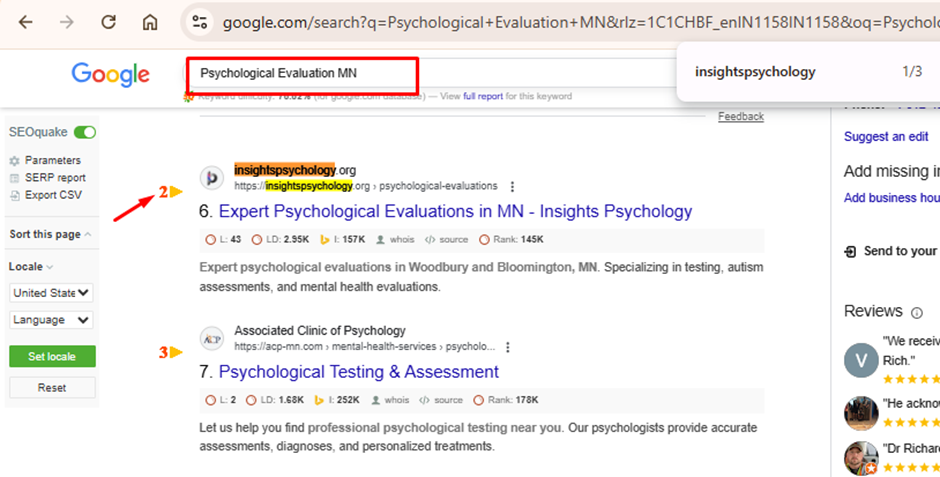
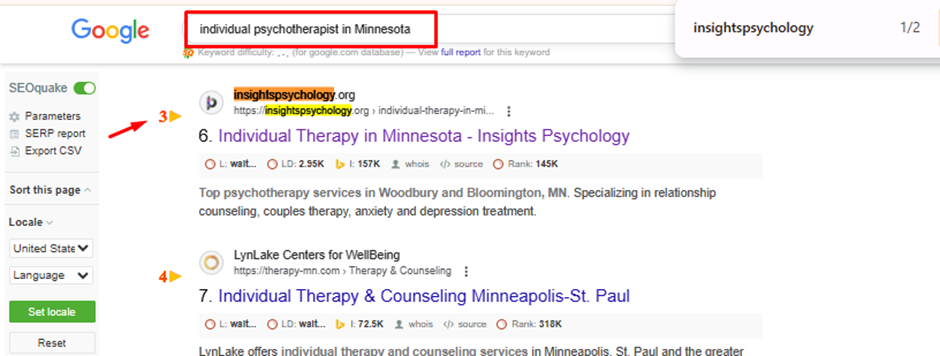
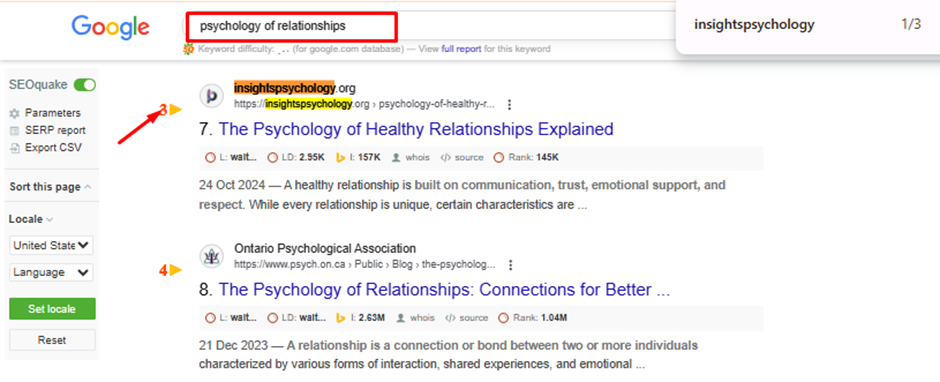
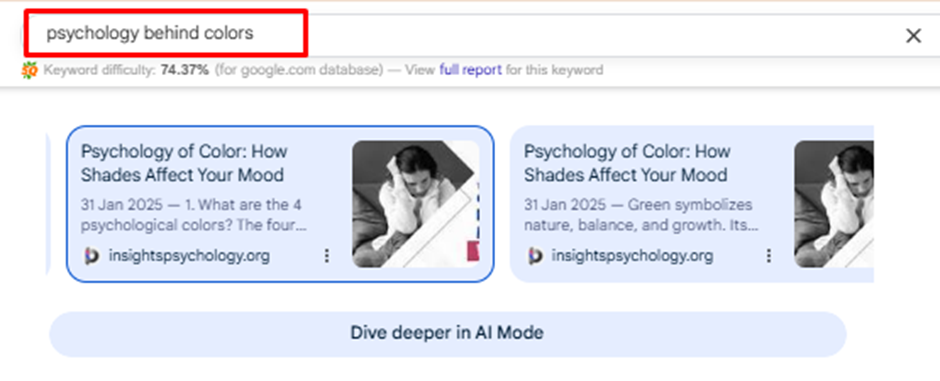

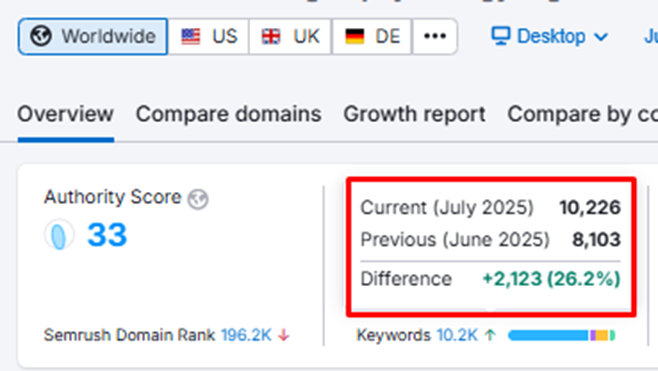


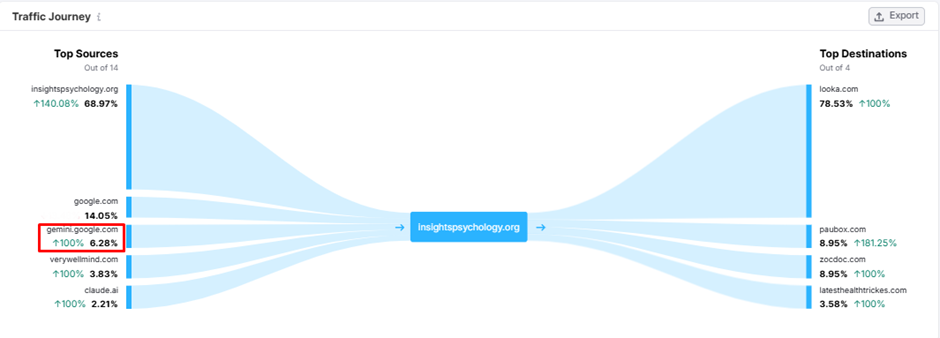
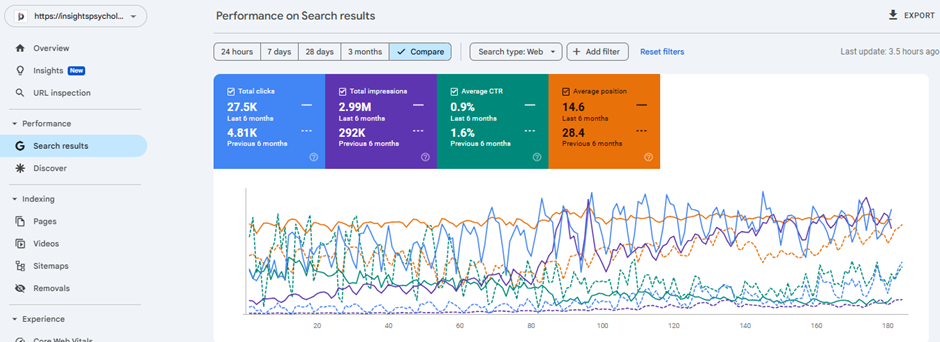
Click here to download the full guide about Website Optimization Using the QSAAS Approach.

